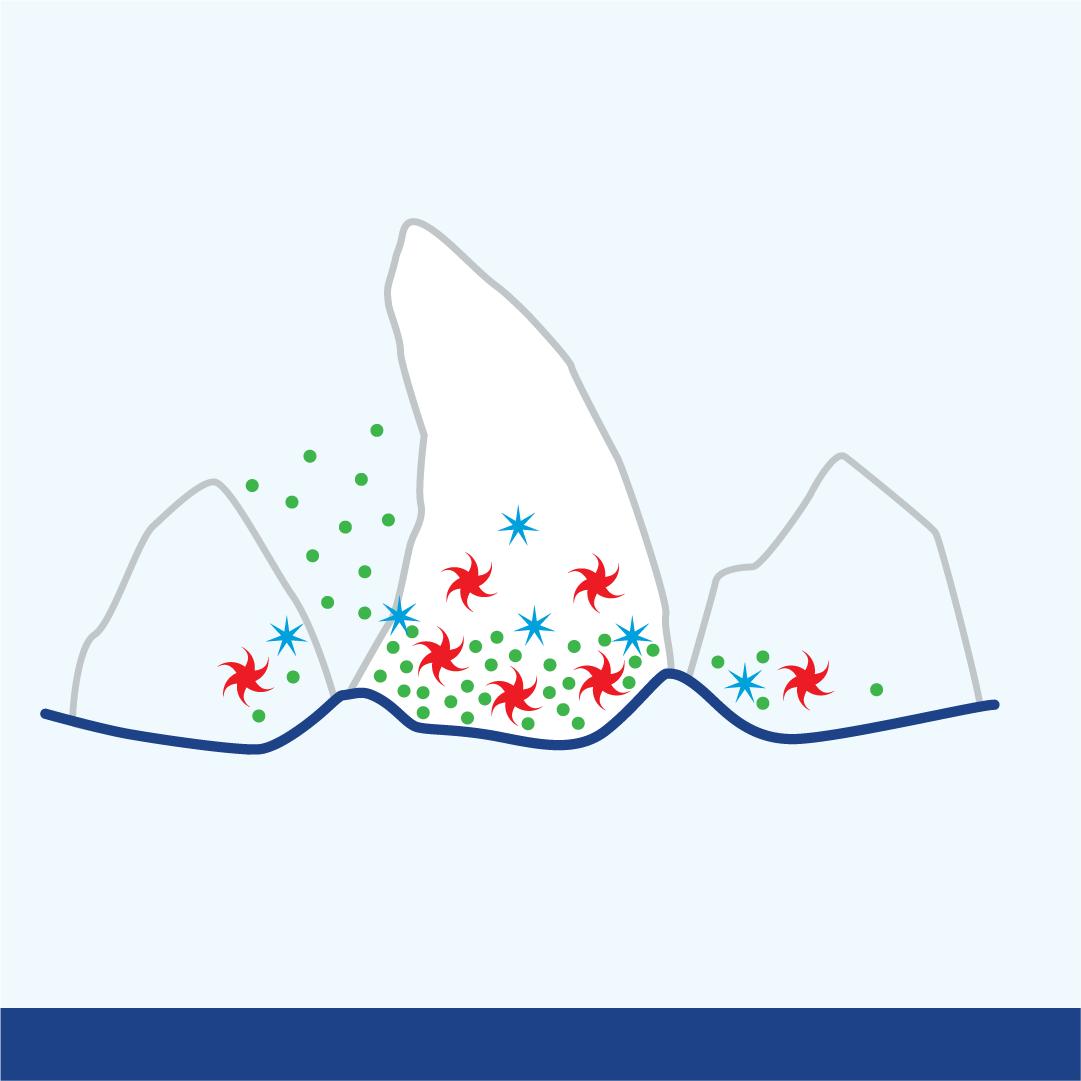In previous blogs and videos, we’ve talked a lot about bacteria biofilms or plaque biofilms, but what exactly are biofilms and how do they form?
Basically, biofilms are a large mass of bacteria and fungi that adhere to a surface via a glue-like substance that acts as an anchor and provides protection from the environment. This allows the bacteria and fungi encased within it to grow laterally and vertically. Other microorganisms that contact this sticky structure also become encased in the film producing biofilms of multiple bacteria and fungi species that combine to become hundreds and hundreds of layers thick. The glue-like matrix makes treating these biofilms extremely difficult because antimicrobials and host immune factors cannot easily penetrate deep within these films making these organisms resistant to most medical treatments.
Biofilms are so effective that they promote antibiotic tolerance by physically protecting germs. They can make bacteria up to 1,000 times more resistant to antibiotics, disinfectants and the host immune system and is recognized by many scientists as one of the leading causes of antibiotic resistance worldwide.
Biofilms can form on both living and nonliving surfaces including teeth (plaque and tartar), skin (such as wounds and seborrheic dermatitis), ears (otitis), medical devices ( such as catheters and endoscopes), kitchen sinks and countertops, food and food processing equipment, hospital surfaces, pipes and filters in water treatment plants and oil, gas and petrochemical process control facilities.
How do biofilms form?
Bacteria and fungi are ever present in the mouth and they continually try to colonize the surface of teeth with the steadfast grip of the glue-like substance mentioned above. (The red and blue stars in this illustration represent the bacteria and fungi.)
These bacteria and fungi require a food source to aid in growth and membrane stability. This primarily comes from the metal ions naturally available in the mouth such as iron, calcium and magnesium, among other things. (The green dots in the illustration represent these metal ions.)
Other bacteria aggregate to this location to form micro-colonies, and they continue to excrete this sticky substance as a protective dome-like layer that is able to provide protection against the host immune system, antimicrobials and disinfectants. (The purple stars in the illustration represent other bacteria species and the green layer represents the build up of the biofilm matrix.)
Under this sticky biofilm, bacteria and fungi multiply rapidly to create a 3-dimensional, multi-layered cluster otherwise known as dental plaque which is really a thick biofilm hundreds and hundreds of layers deep. Once the biofilm reaches critical mass, it releases some bacteria to start this same colonization process on other hard tooth surfaces progressing the formation of plaque to all tooth surfaces. (The green layer in the illustration shows the biofilm getting thicker and growing up the tooth.)
Eventually the plaque biofilms, in combination with other minerals in the mouth start to calcify, turning them into an extremely hard, jagged, bone-like substance called calculus, or tartar. (This is represented in the illustration by the yellow film layer building along the gumline at the bottom of the teeth.)
Bacteria continue to build layers of plaque and tartar that get under the gumline. This, combined with the sharp, jagged calculus structures irritate and scrape the gums under the gumline which can ultimately cause periodontitis. If left untreated, it can contribute to systemic diseases affecting your pet’s heart, liver and kidney’s. (The yellow film layer in the illustration represents the entire plaque biofilm becoming calcified and growing under the gumline.)
According to an estimate by the National Institute of Health (NIH, USA), approximately 80% of all human bacterial infections are caused by biofilms.
Kane Biotech specializes in the advancement of technologies and products that break-up biofilms and destroy bacteria. The destruction of biofilms allows a significant reduction in the use of antimicrobials and thus participates in a prudent and more effective use of these therapeutic agents.
The technologies developed by Kane Biotech for bluestem and silkstem have a positive impact on human, animal and environmental health.
Post time: Jul-10-2023


